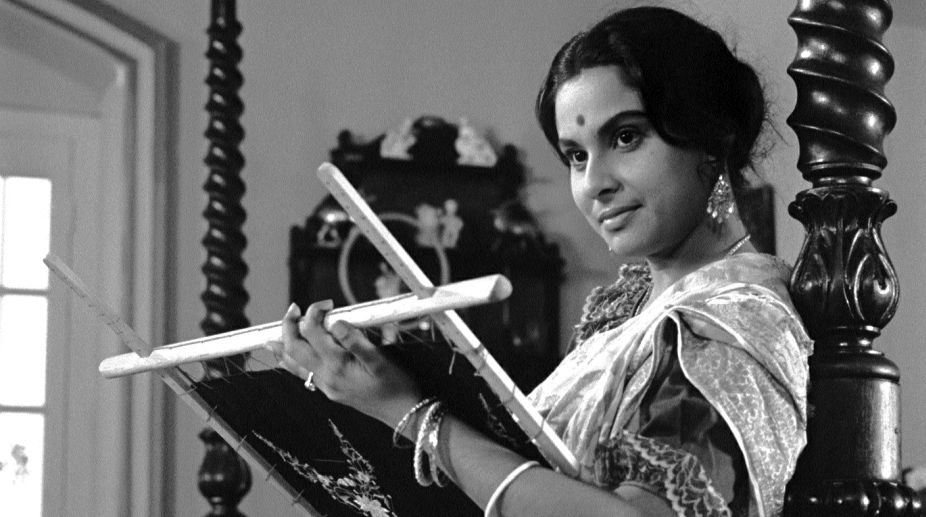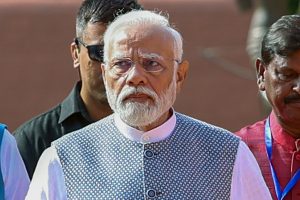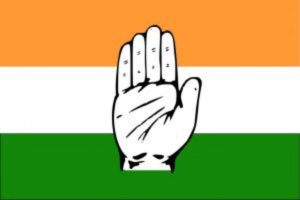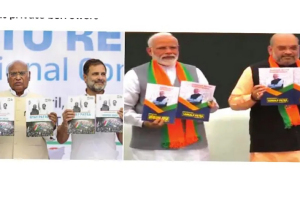An actress who is still on the circuit and reconciled to the crazy work schedules of an ongoing production wouldn’t probably want to declare that she is 75 and inclined to survive on inconsequential cameos. There are quite a few who probably need to soldier on with assignments that come their way.
Madhabi Mukherjee is not among them. After more than six decades of appearing before the camera, she holds a wealth of experience that few can claim in Bengal. Whether it justifies the supporting roles that continue to bring her to the small screen is another matter. The point is that she has covered a range of characters from stereotypes to unforgettable symbols of strength that few of her contemporaries can equal.
It was not just a coincidence that Madhabi Mukherjee suited the creative ideas of practically all the major directors. When she was felicitated by the Federation of Film Societies and Shilpi Samsad, her screen colleagues and others may have liked to recall the three films she did with Satyajit Ray in succession —Mahanagar, Charulata and Kapurush. But films that are recalled with as much emotion, though talked about less, are Baishey Sravan that heralded her entry into socially relevant cinema with its echoes of the Great Bengal Famine, Subarnarekha that marked the high point of Ritwik Ghatak’s painful response to the social and emotional displacements after the Partition of Bengal and lovable studies of women like Subarnalata who could slip effortlessly into a middle class environment.
The best that can be said about Madhabi is that she is an extraordinary example of a self-taught actor who could jump from serious investigation to hackneyed melodrama, from fragile innocence to firm convictions. The capacity to reinvent herself in each role must have made her a director’s delight.
Take three films in which she was cast opposite Uttam Kumar in vastly different situations. In Sankhabela, she was the incurable alcoholic’s wife who walks out after sharing some of her most unforgettable moments of togetherness with him. In Agniswar, she is the constant source of inspiration for the fierce champion of social and moral values. In Chhadmabeshi, she was the wife engaged in a mindless comedy of errors. All three demanded subtle adjustments in temperament and represented mainstream films made by Agragami, Arabinda Mukherjee and Agradoot that touched the hearts of audiences yearning for an escape from reality. What mattered was the ability to adapt herself to situations with the naturalness of the woman next door.
Madhabi could never be typed. Others may have been quick to acquire romantic images early in their careers but she was an exception. She did romantic roles but what distinguished her even on the popular circuit were films where she carried the quintessential features of the women of all age-groups who had a permanent place in the hearts of audiences — Saheb, Bindur Chheley, Biraj Bou, Thana Thekey Aaschhi and Ekti Jiban. During all this, Purnendu Pattrea may have taken the bold step of casting her as the rebel in the male-dominated world of Tagore’s Streer Patra. But then all through her acting career, she presented a softness that had a solid core of strength. It was a quality that endeared her to directors — from veterans like Tapan Sinha (Banchharamer Bagan and her first film, Tonsil) and Tarun Majumdar (Ganadevata) to younger contemporaries like Utpalendu Chakraborty and Rituparno Ghosh.
Inevitably, the major concerns revolved around the Ray films. One could only marvel at the maturity that she brought to her portrayal of Arati in Mahanagar when she was 21and Charu the very next year. She could hardly have imagined that, at that age, she would be the central character with delicate shades of vulnerability, grace and wisdom rooted in feminine power. It was more complex and challenging than what her more glamorous contemporaries had done. It must have given Ghatak the confidence to make her the towering symbol of tragedy in Subarnarekha and convinced Ray that she was the only choice he had for the role of Charu.
The Tagore creation in Nastanir was the quintessential embodiment of feminine contradictions — grappling with an emotional dilemma while sustaining the dignity of her gender and, at the same time, floating into the magical creative devices that made the film a timeless delight. Kapurush may have been less challenging but the subtle gestures and movements in the triangular affair demanded a sensibility and sense of timing that Madhabi had inevitably picked up from the Ray connection.
These are experiences that are inspiring as she continues to perform at the age of 75. What could be somewhat disturbing is that she had been bypassed by the national juries even after Mahanagar and Charulata. One reason could be that the social and human complexities in the two films never touched even discerning viewers in the way Pather Panchali and Jalsaghar did. That was a pity. But those who were convinced about the sensibilities that she carried to the screen, it was perhaps a bigger loss that there wasn’t much of a creative life after the sensational sixties — that she was mostly stuck with uninspiring drama in her later years.











